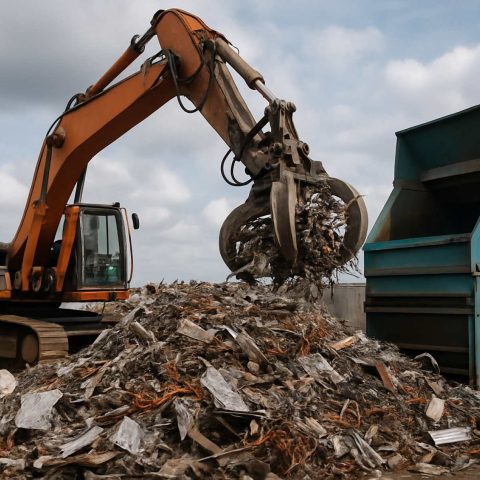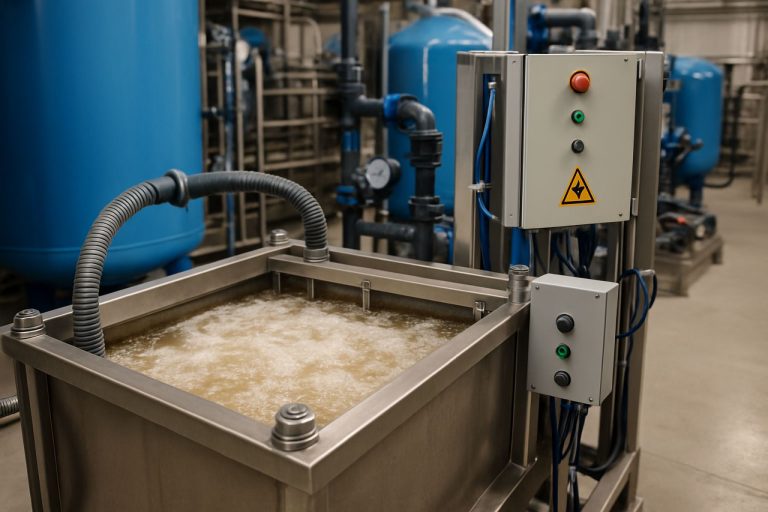Junctional Hemorrhage Management Devices in 2025: Transforming Trauma Care with Next-Gen Solutions. Explore Market Growth, Breakthrough Technologies, and the Future of Life-Saving Interventions.
- Executive Summary: 2025 Market Snapshot & Key Takeaways
- Market Size, Share, and Growth Forecast (2025–2030)
- Technological Advancements and Product Innovations
- Key Players and Competitive Landscape
- Regulatory Environment and Compliance Trends
- Clinical Applications and Efficacy in Trauma Care
- Adoption Drivers and Barriers in Military & Civilian Sectors
- Regional Analysis: North America, Europe, APAC, and ROW
- Strategic Partnerships, M&A, and Investment Activity
- Future Outlook: Emerging Trends and Market Opportunities
- Sources & References
Executive Summary: 2025 Market Snapshot & Key Takeaways
The global market for junctional hemorrhage management devices is poised for significant growth in 2025, driven by increasing demand for advanced trauma care solutions in both military and civilian settings. Junctional hemorrhage—bleeding occurring at anatomical sites where traditional tourniquets are ineffective, such as the groin, axilla, and pelvic regions—remains a leading cause of preventable death in trauma patients. The need for rapid, effective hemorrhage control has spurred innovation and adoption of specialized devices designed to address these critical injuries.
Key players in the sector include Safeguard Medical, which offers the Junctional Emergency Treatment Tool (JETT), and SAM Medical, known for the SAM Junctional Tourniquet (SJT). Both companies have established themselves as leaders in the development and distribution of junctional hemorrhage control devices, with products widely adopted by military, EMS, and hospital trauma teams worldwide. Safeguard Medical in particular has expanded its global reach through partnerships and distribution agreements, while SAM Medical continues to invest in product innovation and clinical validation.
In 2025, the market is characterized by several key trends:
- Increased Military Procurement: Ongoing global conflicts and heightened military readiness have led to increased procurement of junctional hemorrhage devices by defense organizations, particularly in North America and Europe.
- Rising Civilian Adoption: Civilian trauma systems, including prehospital EMS and hospital emergency departments, are increasingly integrating these devices into hemorrhage control protocols, reflecting updated trauma guidelines and growing awareness of their life-saving potential.
- Regulatory and Training Initiatives: Regulatory bodies and professional organizations are emphasizing the importance of training and standardized protocols for the use of junctional hemorrhage devices, supporting broader adoption and improved outcomes.
- Product Innovation: Companies are investing in next-generation devices with enhanced ease of use, faster application times, and improved patient comfort, aiming to address feedback from end-users and clinical studies.
Looking ahead, the outlook for the junctional hemorrhage management device market remains robust. Continued investment in research and development, coupled with expanding clinical evidence and supportive regulatory environments, is expected to drive further adoption. The sector is likely to see new entrants and product launches, as well as increased collaboration between device manufacturers, healthcare providers, and military agencies. As trauma care protocols evolve, junctional hemorrhage management devices are set to become an integral component of advanced hemorrhage control strategies worldwide.
Market Size, Share, and Growth Forecast (2025–2030)
The global market for junctional hemorrhage management devices is poised for significant growth between 2025 and 2030, driven by increasing demand for advanced trauma care solutions in both military and civilian settings. Junctional hemorrhage—bleeding occurring at anatomical junctions such as the groin or axilla—remains a leading cause of preventable death in trauma, particularly in prehospital environments where traditional tourniquets are ineffective. This clinical need has spurred innovation and adoption of specialized devices designed to control bleeding in these challenging anatomical regions.
As of 2025, the market is characterized by a handful of key players, including Safeguard Medical (manufacturer of the Junctional Emergency Treatment Tool, or JETT), SAM Medical (producer of the SAM Junctional Tourniquet), and Zoetis (through its acquisition of Z-Medica, developer of the XSTAT device). These companies have established strong distribution networks and partnerships with military, emergency medical services, and hospital systems worldwide.
Market size estimates for 2025 suggest a valuation in the range of several hundred million USD, with a compound annual growth rate (CAGR) projected between 7% and 10% through 2030. Growth is fueled by rising trauma incidence, increased military spending on combat casualty care, and expanding adoption in civilian emergency response. The U.S. Department of Defense and allied military organizations continue to be major purchasers, but there is a notable uptick in procurement by civilian EMS agencies and hospitals, particularly in regions with high rates of traumatic injury.
Technological advancements are also shaping market dynamics. Devices such as the SAM Junctional Tourniquet and JETT are being refined for easier application, reduced training requirements, and improved efficacy. The XSTAT device, which uses rapidly expanding sponges to control bleeding, is gaining traction for its unique mechanism and rapid deployment capabilities. Regulatory approvals in new geographies, including Europe and Asia-Pacific, are expected to further expand the addressable market over the next five years.
Looking ahead, the market outlook remains robust. Ongoing research into next-generation hemostatic agents, integration of digital monitoring, and miniaturization of devices are anticipated to drive further adoption. Strategic collaborations between device manufacturers and trauma care organizations are likely to accelerate innovation and market penetration. As awareness of junctional hemorrhage management grows among first responders and healthcare providers, the sector is set for sustained expansion through 2030.
Technological Advancements and Product Innovations
Junctional hemorrhage—bleeding at anatomical sites where traditional tourniquets are ineffective, such as the groin, axilla, and neck—remains a critical challenge in trauma care. In 2025, the landscape of junctional hemorrhage management devices is marked by rapid technological advancements and a robust pipeline of product innovations, driven by both military and civilian trauma needs.
Key players in this sector include Safeguard Medical, SAM Medical, and ZOLL Medical Corporation. These companies are at the forefront of developing and refining devices specifically designed to control bleeding in junctional areas, where conventional methods fall short.
One of the most widely adopted devices is the SAM Junctional Tourniquet (SJT), produced by SAM Medical. The SJT is designed to provide targeted pressure to control hemorrhage in the inguinal and axillary regions. In 2025, the SJT and similar devices are seeing increased integration into both military field kits and civilian emergency response protocols, reflecting their proven efficacy and ease of use. Safeguard Medical also offers the Junctional Emergency Treatment Tool (JETT), which is recognized for its rapid application and versatility in prehospital settings.
Technological advancements in 2025 focus on improving device ergonomics, reducing application time, and enhancing pressure control mechanisms. For example, new-generation junctional tourniquets are incorporating intuitive feedback systems—such as pressure indicators and audible alerts—to ensure optimal application and minimize the risk of under- or over-pressurization. Additionally, lightweight materials and compact designs are being prioritized to facilitate portability and rapid deployment in austere environments.
Another area of innovation is the integration of hemostatic agents with mechanical compression devices. Companies are exploring hybrid solutions that combine the physical occlusion of blood flow with advanced clot-promoting materials, aiming to further reduce mortality from non-compressible hemorrhage. ZOLL Medical Corporation is actively investing in research and development to expand its trauma care portfolio, with a focus on next-generation hemorrhage control technologies.
Looking ahead, the outlook for junctional hemorrhage management devices is promising. Ongoing collaborations between device manufacturers, military agencies, and trauma care organizations are expected to yield even more effective and user-friendly solutions. Regulatory pathways are also becoming more streamlined, facilitating faster adoption of innovative products in both military and civilian markets. As a result, the next few years are likely to see continued growth in the availability and sophistication of junctional hemorrhage management devices, ultimately improving survival rates in critical trauma scenarios.
Key Players and Competitive Landscape
The competitive landscape for junctional hemorrhage management devices in 2025 is characterized by a concentrated group of specialized medical device manufacturers, each striving to address the critical need for rapid, effective hemorrhage control in prehospital and battlefield settings. The market is driven by ongoing military conflicts, increased awareness of trauma care, and the prioritization of advanced emergency medical solutions by governments and healthcare providers.
Among the most prominent players is Safeguard Medical, which owns the SAM® Junctional Tourniquet (SJT) and the SAM® Junctional Tourniquet-Stat (SJT-STAT). These devices are widely adopted by military and emergency medical services globally due to their ease of use and proven efficacy in controlling difficult-to-treat hemorrhages at the groin and axilla. Safeguard Medical continues to invest in product innovation and training programs, maintaining a strong presence in both the U.S. and international markets.
Another key competitor is Zoetis, which, through its acquisition of the Junctional Emergency Treatment Tool (JETT) from North American Rescue, has expanded its portfolio in trauma care. The JETT device is recognized for its rapid application and compact design, making it suitable for both military and civilian emergency responders. Zoetis leverages its global distribution network to increase market penetration, particularly in regions with growing investments in trauma systems.
RevMedx is also a significant player, known for the XSTAT® and Parabelt™ systems. The XSTAT® device, originally developed for battlefield use, utilizes mini-sponges to control bleeding in junctional and non-compressible wounds. RevMedx’s focus on research and development, as well as collaborations with defense agencies, positions it as an innovator in the field.
Other notable companies include Combat Medical Systems, which offers the CRoC™ (Combat Ready Clamp), and North American Rescue, a subsidiary of Zoetis, which continues to support the JETT and other hemorrhage control solutions. These companies are actively engaged in securing government contracts, participating in clinical studies, and expanding their training and support services.
Looking ahead, the competitive landscape is expected to intensify as new entrants seek to capitalize on technological advancements and unmet clinical needs. The integration of digital monitoring, improved ergonomics, and faster application times are anticipated trends. Strategic partnerships with military organizations and emergency medical services will remain crucial for market leadership. As regulatory pathways become more defined and reimbursement policies evolve, established players are likely to consolidate their positions, while innovative startups may introduce disruptive solutions to further improve patient outcomes in junctional hemorrhage management.
Regulatory Environment and Compliance Trends
The regulatory environment for junctional hemorrhage management devices is evolving rapidly in 2025, reflecting both the growing clinical demand for these life-saving technologies and the increasing sophistication of device design. These devices, which are critical for controlling bleeding in anatomical regions where traditional tourniquets are ineffective, are subject to rigorous oversight by regulatory bodies such as the U.S. Food and Drug Administration (FDA) and the European Medicines Agency (EMA).
In the United States, junctional hemorrhage management devices are typically classified as Class II medical devices, requiring premarket notification through the 510(k) pathway. Recent years have seen the FDA emphasize the importance of robust clinical evidence, biocompatibility testing, and human factors engineering in submissions. The FDA’s Center for Devices and Radiological Health (CDRH) has also increased post-market surveillance requirements, mandating real-world performance data collection and adverse event reporting. This is particularly relevant for devices such as the SAM Junctional Tourniquet (SJT) from SAM Medical and the Junctional Emergency Treatment Tool (JETT) from North American Rescue, both of which have received FDA clearance and are widely used by military and emergency medical services.
In Europe, the transition to the Medical Device Regulation (MDR 2017/745) has significantly impacted manufacturers. The MDR imposes stricter requirements for clinical evaluation, post-market surveillance, and traceability. Companies such as SAM Medical and North American Rescue have had to update their technical documentation and clinical data to maintain CE marking for their junctional hemorrhage devices. The MDR’s focus on continuous safety monitoring and performance evaluation is expected to drive further innovation and transparency in the sector.
Globally, harmonization efforts are underway, with organizations like the International Medical Device Regulators Forum (IMDRF) promoting common standards for device safety and efficacy. This is particularly important as manufacturers seek to expand into new markets in Asia and the Middle East, where local regulatory frameworks are being updated to align with international best practices.
Looking ahead, the regulatory landscape for junctional hemorrhage management devices is expected to become even more stringent, with greater emphasis on digital health integration, cybersecurity, and real-world evidence. Manufacturers are investing in compliance infrastructure and post-market data analytics to meet these evolving requirements. As a result, the next few years will likely see a convergence of regulatory standards, improved patient safety, and accelerated adoption of advanced hemorrhage control technologies worldwide.
Clinical Applications and Efficacy in Trauma Care
Junctional hemorrhage—bleeding occurring at anatomical sites such as the groin, axilla, or neck where traditional limb tourniquets are ineffective—remains a leading cause of preventable death in both military and civilian trauma. The past decade has seen the emergence and refinement of specialized junctional hemorrhage management devices, with 2025 marking a period of increased clinical adoption and ongoing evaluation of their efficacy in trauma care.
Key devices currently in use include the Combat Ready Clamp (CRoC), the Junctional Emergency Treatment Tool (JETT), the SAM Junctional Tourniquet (SJT), and the Abdominal Aortic and Junctional Tourniquet (AAJT). These devices are designed to provide rapid, targeted compression to control bleeding at junctional sites, often serving as a bridge to definitive surgical intervention. SAM Medical, the manufacturer of the SJT and AAJT, continues to report widespread deployment of its products in both military and prehospital civilian settings, with ongoing product updates aimed at improving ease of use and patient safety.
Recent clinical data and field reports suggest that these devices are effective in achieving hemorrhage control when applied correctly. For example, the U.S. Department of Defense’s Committee on Tactical Combat Casualty Care (CoTCCC) has endorsed several of these devices for use in battlefield medicine, citing their ability to control life-threatening bleeding in scenarios where conventional tourniquets are not applicable. In 2025, ongoing multicenter studies are evaluating the real-world outcomes of junctional device use, with early results indicating high rates of hemorrhage control and improved survival in both military and civilian trauma registries.
The integration of these devices into civilian emergency medical services (EMS) is accelerating, driven by increased awareness of mass casualty incidents and the need for rapid hemorrhage control. Manufacturers such as Safeguard Medical (which distributes the CRoC and JETT) are collaborating with EMS agencies to provide training and support, ensuring that first responders are equipped to deploy these devices effectively. Additionally, organizations like North American Rescue are expanding their product lines and educational initiatives to address the unique challenges of junctional hemorrhage in both urban and austere environments.
Looking ahead, the next few years are expected to bring further innovation, including lighter, more intuitive devices and integration with digital monitoring systems. As clinical evidence accumulates and device designs evolve, junctional hemorrhage management devices are poised to become a standard component of trauma care protocols worldwide, with the potential to significantly reduce mortality from non-compressible hemorrhage.
Adoption Drivers and Barriers in Military & Civilian Sectors
The adoption of junctional hemorrhage management devices (JHMDs) in both military and civilian sectors is shaped by a complex interplay of clinical needs, regulatory progress, and operational realities. As of 2025, the primary driver remains the urgent requirement to control life-threatening bleeding in anatomical regions not amenable to standard tourniquets, such as the groin and axilla. In military settings, the prevalence of blast and gunshot injuries in modern conflicts has underscored the necessity for rapid, effective hemorrhage control, propelling the integration of JHMDs into combat casualty care protocols.
Key products such as the SAM Junctional Tourniquet (SJT) and the Junctional Emergency Treatment Tool (JETT) have been widely adopted by armed forces, including the U.S. Department of Defense, due to their proven efficacy and ease of use in prehospital environments. SAM Medical, the manufacturer of the SJT, continues to collaborate with military agencies to refine device design and training, while North American Rescue supplies the JETT and other hemorrhage control solutions to both military and civilian first responders.
In the civilian sector, adoption is accelerating, driven by the increasing frequency of mass casualty incidents and the expansion of public bleeding control initiatives such as the “Stop the Bleed” campaign. Emergency medical services (EMS) and trauma centers are incorporating JHMDs into their standard equipment, recognizing their value in bridging the gap between injury and definitive surgical care. However, widespread civilian uptake is moderated by factors such as device cost, the need for specialized training, and the relative rarity of junctional hemorrhage compared to extremity bleeding.
Regulatory support and updated clinical guidelines are further catalyzing adoption. The U.S. Food and Drug Administration (FDA) has cleared several JHMDs for use, and organizations like the Committee on Tactical Combat Casualty Care (CoTCCC) have endorsed their deployment in both military and civilian trauma kits. Ongoing research and field data collection are expected to inform best practices and device improvements over the next few years.
Barriers persist, particularly in resource-limited settings where procurement budgets and training infrastructure may be insufficient. Additionally, the learning curve associated with proper device application can limit effectiveness if not addressed through comprehensive education programs. Manufacturers such as SAM Medical and North American Rescue are responding by developing more intuitive devices and expanding training resources.
Looking ahead, the outlook for JHMD adoption is positive, with anticipated growth in both sectors as awareness increases, device designs evolve, and integration into trauma protocols becomes more standardized. The continued collaboration between manufacturers, military agencies, and civilian healthcare organizations will be pivotal in overcoming remaining barriers and optimizing outcomes for patients with life-threatening junctional hemorrhage.
Regional Analysis: North America, Europe, APAC, and ROW
The global market for junctional hemorrhage management devices is experiencing significant regional variation, shaped by trauma incidence, military activity, regulatory environments, and healthcare infrastructure. As of 2025, North America remains the leading region, driven by robust adoption in both military and civilian emergency medical services. The United States, in particular, has prioritized hemorrhage control in prehospital care, with the Department of Defense and civilian agencies integrating advanced devices such as the SAM Junctional Tourniquet and the Junctional Emergency Treatment Tool (JETT) into trauma protocols. Key manufacturers like SAM Medical and ZOLL Medical Corporation are headquartered in the U.S., supporting rapid product development and deployment.
In Europe, the market is expanding steadily, propelled by increased awareness of trauma care and harmonization of emergency response standards across the European Union. Countries such as the United Kingdom, Germany, and France are investing in advanced hemorrhage control solutions for both military and civilian use. European-based companies, including Prometheus Medical, are active in supplying junctional hemorrhage devices and training programs. Regulatory pathways in the EU, while rigorous, have become more streamlined for life-saving devices, facilitating market entry and adoption.
The Asia-Pacific (APAC) region is witnessing accelerated growth, particularly in countries with large military forces and increasing investments in trauma care infrastructure. Japan, South Korea, Australia, and India are notable markets, with government initiatives to modernize emergency medical services and military medical support. However, the region faces challenges such as variable regulatory standards and limited access in rural areas. International manufacturers are expanding their presence, often through partnerships with local distributors and healthcare providers.
The Rest of the World (ROW), encompassing Latin America, the Middle East, and Africa, presents a mixed outlook. While adoption rates are currently lower due to resource constraints and limited trauma system development, there is growing recognition of the need for effective hemorrhage control, especially in conflict zones and regions with high rates of road traffic injuries. Humanitarian organizations and international aid programs are playing a role in introducing junctional hemorrhage management devices to these markets.
Looking ahead, the next few years are expected to see continued growth across all regions, with North America and Europe maintaining leadership due to established trauma systems and procurement capacity. APAC is poised for the fastest relative expansion, while ROW markets may benefit from targeted training and international collaboration. Ongoing innovation by companies such as SAM Medical, ZOLL Medical Corporation, and Prometheus Medical will likely drive further adoption and improved outcomes globally.
Strategic Partnerships, M&A, and Investment Activity
The landscape of junctional hemorrhage management devices is experiencing notable strategic activity as companies seek to expand their portfolios, access new markets, and accelerate innovation. In 2025, the sector is characterized by a mix of targeted acquisitions, collaborative partnerships, and increased investment, reflecting the growing recognition of the importance of rapid hemorrhage control in both military and civilian trauma care.
One of the most prominent players, Safeguard Medical, continues to leverage its global reach and diverse product suite, which includes the SAM Junctional Tourniquet (SJT). The company has a history of strategic acquisitions, such as its previous integration of Trauma FX and PerSys Medical, and is expected to pursue further M&A to consolidate its leadership in pre-hospital emergency care. Safeguard Medical’s approach often involves acquiring innovative device manufacturers and integrating their technologies into its distribution network, thereby broadening its offering for both military and civilian first responders.
Another key player, Zoll Medical Corporation, a subsidiary of Asahi Kasei Group, has been active in expanding its trauma care portfolio. While best known for its cardiac and resuscitation devices, Zoll has shown interest in hemorrhage control through partnerships and technology scouting. Industry observers anticipate that Zoll may enter into joint ventures or acquire smaller firms specializing in junctional hemorrhage management to complement its existing emergency medical solutions.
Meanwhile, RevMedx, the developer of the XSTAT and Parabelt devices, has attracted investment from both defense and venture capital sources. The company’s focus on innovative, field-deployable solutions has made it a target for strategic partnerships, particularly with defense contractors and government agencies seeking to enhance battlefield survivability. In 2025, RevMedx is expected to deepen collaborations with military procurement organizations and may explore co-development agreements with larger medtech firms to accelerate regulatory approvals and global distribution.
Investment activity in the sector is also being driven by the increasing adoption of junctional hemorrhage devices in civilian trauma systems. Companies such as Zoll Medical Corporation and Safeguard Medical are likely to benefit from public-private partnerships aimed at improving mass casualty preparedness. Additionally, the sector is witnessing interest from private equity and strategic investors, who recognize the potential for growth as trauma protocols evolve and regulatory pathways become more defined.
Looking ahead, the next few years are expected to see continued consolidation, with established players acquiring innovative startups and forming alliances to address emerging needs in trauma care. The strategic focus will likely remain on expanding product portfolios, securing regulatory approvals, and strengthening distribution channels to meet the rising demand for effective junctional hemorrhage management solutions worldwide.
Future Outlook: Emerging Trends and Market Opportunities
The landscape for junctional hemorrhage management devices is poised for significant evolution in 2025 and the coming years, driven by technological innovation, expanding clinical adoption, and evolving military and civilian trauma protocols. Junctional hemorrhage—bleeding at anatomical sites where traditional limb tourniquets are ineffective—remains a leading cause of preventable death in both battlefield and civilian trauma settings. As such, the demand for effective, user-friendly, and rapidly deployable devices is expected to grow.
Key players in this sector, such as Safeguard Medical (manufacturer of the Junctional Emergency Treatment Tool, or JETT), SAM Medical (developer of the SAM Junctional Tourniquet), and Z-Medica (known for the XSTAT device), are actively investing in research and development to enhance device efficacy, ease of use, and versatility. These companies are focusing on next-generation solutions that integrate hemostatic agents, pressure sensors, and intuitive application mechanisms to reduce application time and improve outcomes in high-stress environments.
Recent years have seen the U.S. Department of Defense and allied military organizations prioritize the procurement and fielding of advanced junctional hemorrhage control devices, reflecting their critical role in combat casualty care. This trend is expected to continue through 2025, with increased funding for device trials, field evaluations, and integration into standard-issue medical kits. Civilian emergency medical services (EMS) and trauma centers are also expanding adoption, particularly as mass casualty incidents and active shooter events highlight the need for rapid hemorrhage control solutions.
Emerging trends include the miniaturization of devices for easier carry and deployment, the use of smart materials that adapt to patient anatomy, and the integration of digital feedback systems to guide first responders during application. Additionally, regulatory agencies such as the U.S. Food and Drug Administration (FDA) are streamlining pathways for device approval, encouraging innovation and faster market entry for novel products.
Looking ahead, the market is likely to see increased collaboration between device manufacturers, military agencies, and academic trauma centers to validate new technologies and expand training programs. The global market outlook remains robust, with North America and Europe leading adoption, but with growing interest in Asia-Pacific and Middle Eastern regions as trauma care infrastructure improves. As the sector matures, the focus will shift toward devices that offer multi-functionality, such as combined hemorrhage control and pelvic stabilization, further broadening their clinical utility and market potential.









